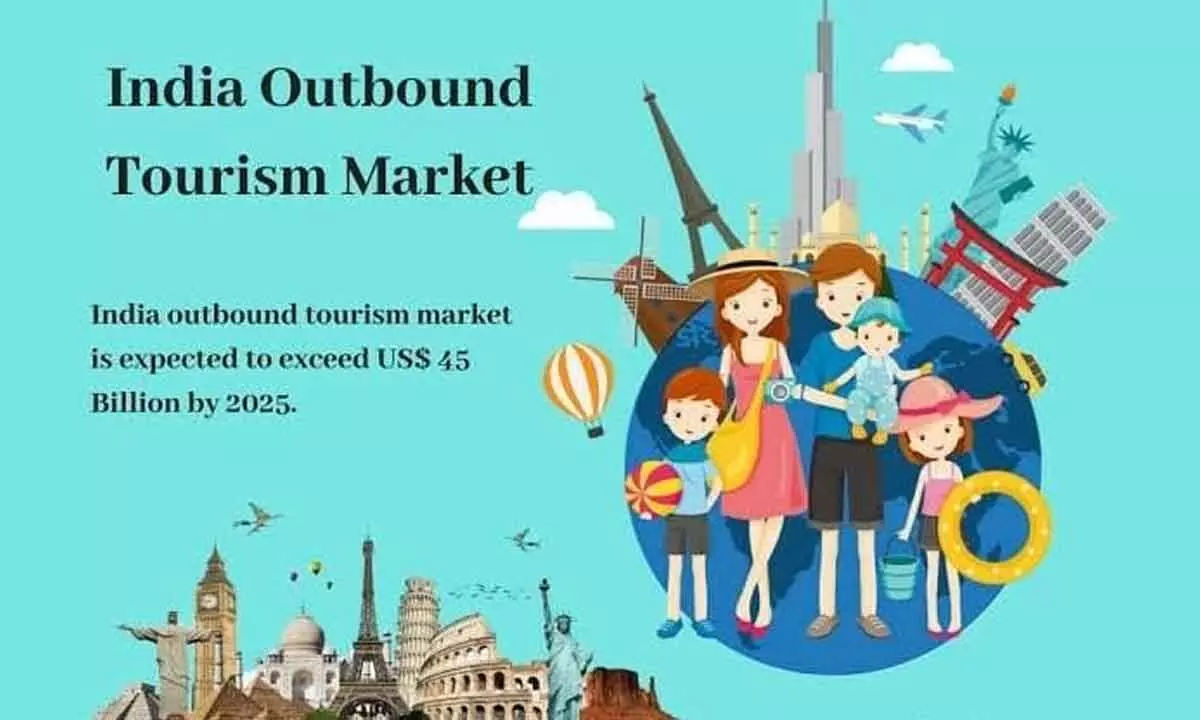Indian outbound travel is among the fastest growing markets globally
The next generation of Indian travellers will be gender-specific and are less likely to travel in multigenerational family groups
image for illustrative purpose

Rising personal income levels and greater accessibility will enable international travel for a greater proportion of the country’s population. Its sizable global diasporas and international student body will continue to be a pull factor for visiting friends and relatives. In addition, affluent Indian travellers will seek first-class, personalised experiences that exude cachet
Outbound trips from India will surpass $42 billion by 2024, according to ‘Outbound Travel and Tourism – An Opportunity Untapped’, a report by Nangia Andersen LLP in association with FICCI. The report highlights the outlook for the Indian travel market. Andersen notes that the government could increase direct connections to popular and upcoming destinations, allow foreign cruise vessels to operate on Indian waters, and take concerted and coordinated efforts on multiple fronts to propel the outbound tourism market.
“The Indian outbound travel market is among the fastest growing markets globally with approximately 80 million passport levels of purchasing power, especially among the middle class,” Suraj Nangia, Nangia Andersen LLP Head – Government and Public Sector Advisory said.
Indians spent approximately $12.6 billion on outbound trips in 2021, compared to $22.9 billion in 2019. While the reason for a decrease in spending could be due to the pandemic, these figures point out the huge value that can be captured from Indian outbound travellers, according to the report.
Rising personal income levels and greater accessibility will enable international travel for a greater proportion of the country’s population. Its sizable global diasporas and international student body will continue to be a pull factor for visiting friends and relatives. In addition, affluent Indian travellers will seek first-class, personalised experiences that exude cachet.
Business travel will expand in line with commercial interests, with the meetings, incentives, conferences and exhibitions segment (MICE) offering the greatest prospects. The next generation of Indian travellers will be younger, more gender-specific, and less likely to travel in multigenerational family groups. By 2031, an estimated 50 million Indians will travel overseas.
India’s outbound tourism market is expected to generate revenues of about US$ 62 billion by 2026. With 74 million passport holders in 2017, India is a huge outbound travel market. Ranked as the fastest-growing major economy, Indian outbound travellers put it among the top 20 countries for outbound tourism.
Indian outbound visitors will grow with a Compound Annual Growth Rate (CAGR) of 10 %, while the Indian Outbound Tourism Market;s growth hovered around $45 billion in 2022. Between 1997-2017, outbound tourists from India grew from 3.5 million to 21.9 million, making it the fastest-growing market behind China.
An estimated 3.6 million Indians currently take a luxury trip abroad each year, which could increase by 8.6 % annually. An average per-person, per-visit expenditure of $ 876 is estimated. The CAPA India and Expedia Report calculates the average spending by Indian outbound travellers on short-haul trips to be about $ 857 per trip per person, and long-haul trips to be $ 1,687.
The average Indian traveller spends $1,200 per visit as compared with Americans who spend about $700, and British who spend 500 approximately, according to UNWTO’s report The Indian Outbound Travel Market.
India has now passed France in nominal terms with a $ 2.6 trillion economy, which is about 3.3% of the global total. India’s luxury travel market has projected an annual growth rate of 12.8 % between 2015 and 2025. This is the highest growth of any of the top 25 economies. Luxury travel is growing at a much faster rate than overall travel in India, which is also forecast to increase by 7.5 % in the same time period.
A key feature of the outbound market going forward will be the increasing share of discretionary leisure travel, which, over time, is likely to become the leading driver of traffic, whereas business, VFR and labour have historically been the primary purpose of international travel. As more Indians travel, and travel more often, their preferences are becoming increasingly diverse and sophisticated.
Dubai, Singapore and Thailand will remain perennial favourites but the research indicates an increasing interest in destinations like Azerbaijan, Egypt, Israel, Kazakhstan and Kenya, while long-haul demand for Australia, the US, Europe, South Africa and Latin America is growing. Meanwhile, younger travellers are increasingly seeking experiences, with holidays that revolve around adventure, activities and events.
The strength and resilience of the Indian outbound market is visible in the fact that several destinations have seen a faster recovery in Indian visitor arrivals after the pandemic than those from most other source markets.
Despite the tremendous potential, challenges remain. Air connectivity is a major constraint. The Indian international market remains highly under-penetrated. Historically, this has been due to Indian carriers not having the fleet to commit significant capacity to overseas routes, while most of the foreign carriers that were interested in expanding had exhausted their bilateral entitlements.

